Applied Physics

Asteroidea Electrica, first prize winner by Adrianus Indrat Aria. Cambridge University, CC BY
By Allan McRobie, University of Cambridge
We all know engineering is useful, functional, even ingenious. But the engineering photography competition we hold each year provides us a chance to wander outside its merely utilitarian aspects into dimensions such as beauty, humor and even humanity to find unexpected connections and poetic resonance.
As one of the judges, one quality I look for in the images is some added dimension, a richness, the capacity to trigger a cascade of unrelated ideas. Quite by…
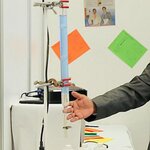
Researchers at the University of Guanajuato (UGTO), in middle Mexico, developed an extraction column which recovers metals companies use in their production processes; and thus avoid environmental pollution and lessen economic losses.
Using the principles of liquid-liquid technology, researchers have developed an extraction column which recovers metals companies use in their production processes and avoids both environmental pollution and lessen economic losses.
The technology is already at laboratory prototype stage and the creators are in the process of obtaining a patent.
Credit:…
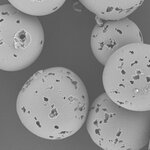
Metamaterials have long held promise for extraordinary properties when it comes to diverting and controlling waves, especially sound and light: for instance, at the right optical frequency, they can make an object invisible, or increase the resolving power of a lens.
A new project has created three-dimensional metamaterials by combining physico-chemical formulation and microfluidics technology, making soft metamaterials that are easier to shape. In their experiment, the researchers got ultrasonic oscillations to move backwards while the energy carried by the wave moved forwards.
To obtain a…

Computers don't really boot up any faster than they have in decades and that is due to limitations in electric currents (and ignoring the bloated software rolled out after every new chip), which are also a significant power drain.
The solution may be on the horizon. A team has created a room-temperature magnetoelectric memory device, equivalent to one computer bit, that could lead to next-generation nonvolatile memory: magnetic switchability, in two steps, with nothing but an electric field. When data can be encoded without current - for example, by an electric field applied across an…
I finally received a Foldscope beta test kit. “Foldscope is an origami-based print-and-fold optical microscope that can be assembled from a flat sheet of paper,” according to the website. The Foldscope “can provide over 2,000X magnification with sub-micron resolution (800nm), weighs less than two nickels (8.8 g), is small enough to fit in a pocket (70 × 20 × 2 mm3), requires no external power, and can survive being dropped from a 3-story building or stepped on by a person.”
The kit came with instructions, perforated cardboard for the microscope assembly parts, lenses, magnetic strips to…
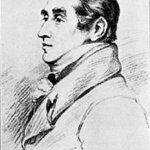
Charles Hatchett - Tribologist to the Royal Mint
Charles Hatchett is widely known as the discoverer of Niobium, but he deserves recogniton for other acheivements also. He was the first scientist to chemically analyse Bournonite[1]. (Perhaps it should be renamed Hatchettite?) He appears to have been the first scientist to experiment with artificial tanning agents[2]. Considering his experiments with the dissolving of lac in water[3] he should also be credited with the common formulations of shellac varnish and shellac-based india ink. He is certainly the first -…

Excerpt from “The Terrorism Delusion” by Meuller and Stewart:
We have argued that terrorism is a limited problem with limited consequences and that the reaction to it has been excessive, and even delusional. Some degree of effort to deal with the terrorism hazard is, however, certainly appropriate—and is decidedly not delusional. The issue then is a quantitative one: At what point does a reaction to a threat that is real become excessive or even delusional?
At present rates, as noted earlier, an American’s chance of being killed by terrorism is one in 3.5 million in a given year. This…
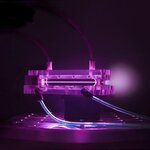
Researchers from the U.S. Department of Energy's Lawrence Berkeley National Lab have accelerated subatomic particles to the highest energies ever recorded from a compact accelerator - a laser-plasma accelerator, which is a new class of particle accelerators that can fit on a table.
The team used a specialized petawatt laser and a charged-particle gas called plasma to get the particles up to speed - electrons in this case - inside a nine-centimeter long tube of plasma. The speed corresponded to an energy of 4.25 giga-electron volts. The acceleration over such a short distance…

Using commercial solar cells, researchers have converted over 40 percent of the sunlight hitting a solar system into electricity, the highest efficiency ever reported.
Since plant photosynthesis, the thing solar cells want to mimic, is only 5 percent, and the human body is only 25 percent efficient, the world should have switched to solar long ago if anywhere near 40 percent was attainable, right? Efficiency means different things. Electric cars claim to be over 90 percent efficient, for example, because they power the car directly, but that is only when manufacturers frame the result…
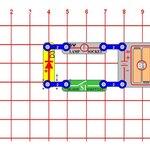
The diode has a number of applications in electronic circuits. One application you may be familiar with is a rectifier. A rectifier converts alternating current (AC) to direct current (DC). Alternating current periodically changes direction while direct current only flows in one direction. "The most common function of a diode," according to Wikipedia, "is to allow an electric current to pass in one direction (called the diode's forward direction), while blocking current in the opposite direction (the reverse direction)." It’s easy to demonstrate how the diode will let current flow…